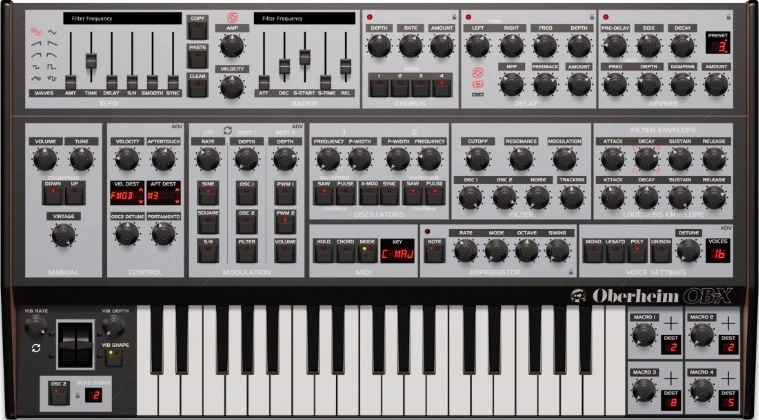July 17, 2025
by GForce Software
By sound designer Reverb Machine.
The LFO is one of the most powerful and unique tools in a synthesiser. It stands for Low Frequency Oscillator, and it’s a slow waveform that automatically moves a parameter like pitch or filter cutoff up and down. Most synths have at least one LFO, and learning how to use them creatively can help you create more interesting patches with motion and movement.
In this article, we’ll look at some LFO patching ideas using OB-X, a synth with loads of modulation options, including both a front-panel LFO and deeper per-parameter control via X-LFOs. You can apply these ideas to other synths too, which is a great way to learn a new instrument or plugin.
Vibrato
Vibrato is created by pitch moving up and down, and in synth patches this is usually done with an LFO to emulate how singers expressively add vibrato to the end of long notes. A small amount of vibrato can be added to any patch to add a vintage, detuned effect, while a higher LFO depth can be used to push your synth into woozy, lo-fi territory.
In OB-X, vibrato can be added using the OSC1 or OSC2 buttons in the front panel Modulation section, then setting the amount of vibrato using the Destination 1 Depth knob. Sine and triangle waveform shapes give the most natural vibrato sound, and an LFO depth amount under 20% is usually enough. The vibrato speed can then be set by adjusting the LFO rate knob.
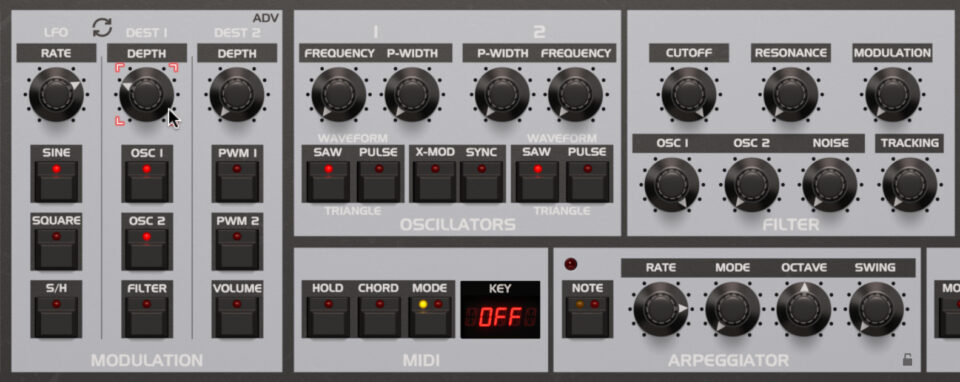
For more expressive vibrato, you can add a fade-in so the vibrato starts after a short delay, emulating how a guitarist or violinist uses vibrato. OB-X has a vibrato delay knob called Intro, which can be accessed via the “ADV” button at the top-right of the Modulation section. The Intro knob controls how long the LFO fade-in takes.
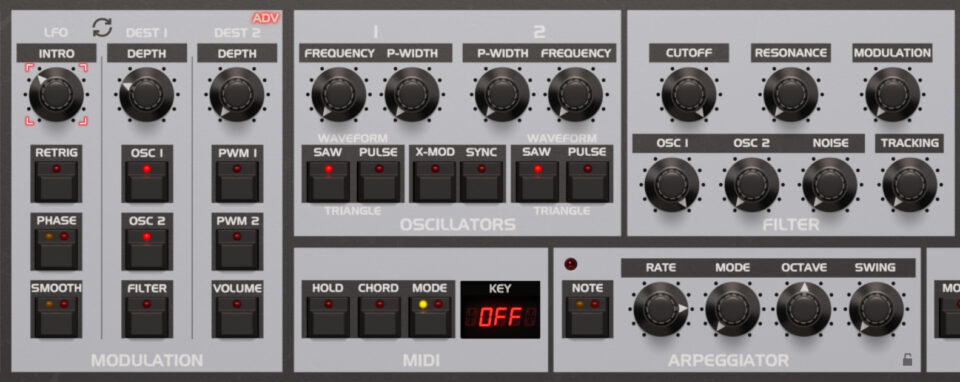
OB-X also includes powerful X-LFOs, which means that almost every parameter has its own independent LFO. Click a parameter, then assign an LFO amount and shape using the advanced panel controls. Vibrato can also be applied by using the X-LFO for the global Tuning knob on the left side of the interface. The X-LFOs feature more waveform shapes, along with advanced shaping tools like randomisation, smoothing, and phase sync.
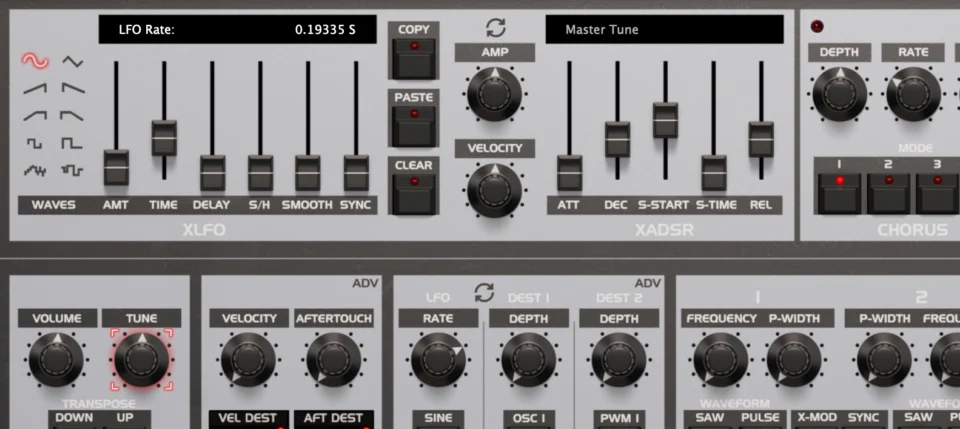
Oscillator Chorusing
Chorus effects are based on subtle detuning between multiple signals, something you can recreate by applying LFO vibrato to just one oscillator in a two-oscillator patch. In OB-X, this can be done by turning up the volume for both Osc 1 and Osc 2, then enabling only one of the Mod Destination buttons in the Modulation section. It’s an effective way to create vintage string-style patches. OB-X does include a built-in chorus effect, but this oscillator-based technique produces a different flavour of detuning, more reminiscent of vintage ensemble sounds.
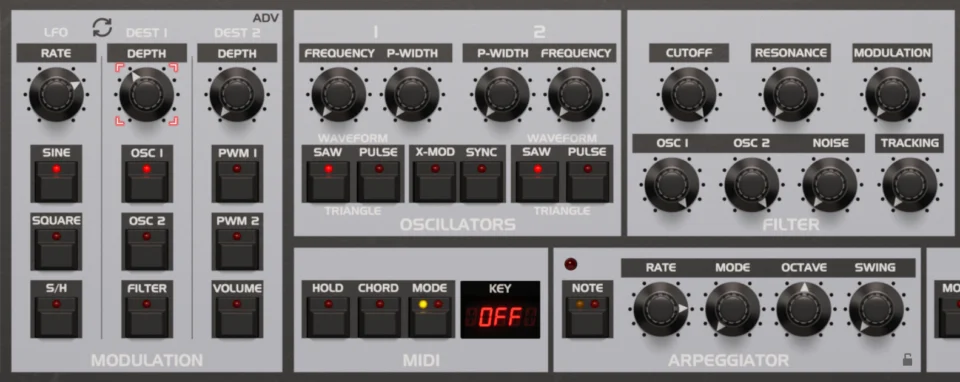
Pulse Width Modulation (PWM)
Pulse-width modulation changes the width of a square wave over time, often using an LFO, to create a rich, animated oscillator sound that can be brighter with more movement than a static waveform.
To apply PWM in OB-X, use the front panel LFO and enable PWM1 or PWM2 under Destination 2 for the relevant oscillator. Then raise the depth slider. Make sure the oscillator is set to a pulse wave, as PWM won’t have any effect on other wave shapes. This is a great foundation for creating rich-sounding pads.
Tremolo
Tremolo is volume modulation, a classic effect in electric pianos and guitar amps. In OB-X, this can be done by assigning the front panel LFO to the Volume destination in column 2. A triangle or sine shape gives a smooth, regular pulse, while a square wave LFO creates a choppier, on-off modulation. For a Rhodes-style tremolo, try a rate of around 5.5 Hz.
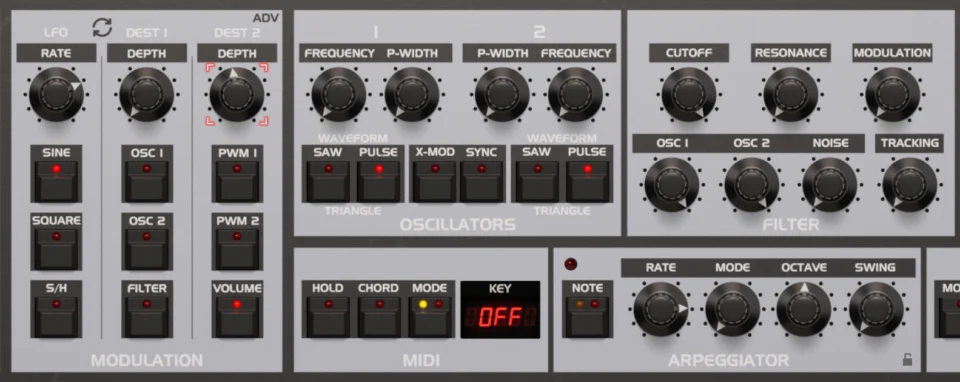
You can also apply volume modulation using the X-LFOs. Use the Volume knob on the left of the interface and assign an X-LFO. One effect I particularly like is using the red noise waveform to add a degraded, tape-like character to the patch.
Filter Modulation
Filter modulation is one of the most flexible uses of an LFO and is pretty unique to synths. Smooth triangle or sine waves will create a gentle rising and falling effect, like the warbly keys in “Another One” by Mac DeMarco or the undulating arpeggios in “Untravel” by Rival Consoles. Sample & hold modulation creates a stuttering effect that can be heard in songs like “The Beautiful Ones” by Prince or “The Camera Eye” by Rush. Ascending sawtooth wave LFOs can create a swelling sound like the one in “Nangs” by Tame Impala, while descending sawtooth waves can sound similar to envelope decay plucks. These rhythmic LFOs work best when synced to the DAW tempo.
Oscillator Mix Modulation
Unlike the front-panel LFO, X-LFOs can target parameters that aren’t available in the main modulation section. Slowly modulating oscillator volumes can be useful to create movement between two different oscillator sounds, which works very well in ambient patches. For example, set oscillator 1 and 2 to different waveforms and octaves, then assign separate X-LFOs to the OSC1 and OSC2 volume knobs in the Filter section. If the LFOs run at different rates, the mix will subtly drift over time, creating a Brian Eno-style texture.
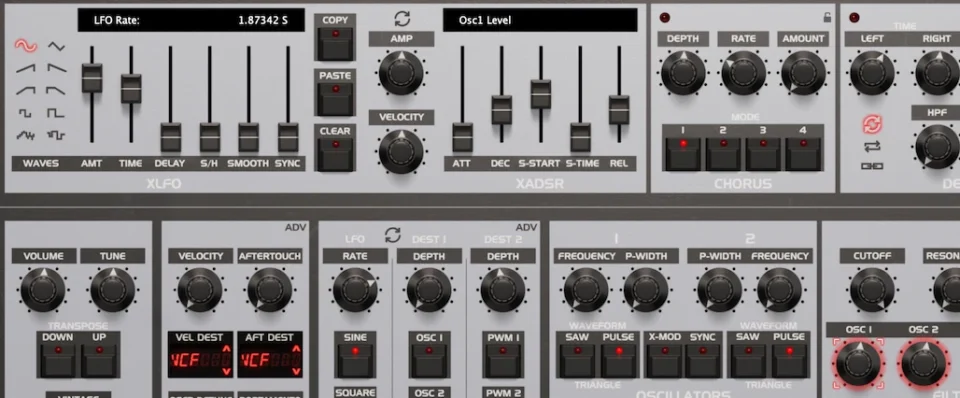
Envelope Modulation
With X-LFOs, even the envelope stages, attack, decay, sustain, and release, can be modulated. This is especially useful for repetitive sequences, as modulating the decay can break up the mechanical feel of a repeating pattern by slightly changing the envelope on each note. A triangle or sine LFO shape makes the decay progressively shorter or longer, while a random LFO can ensure unpredictable variation for each note.
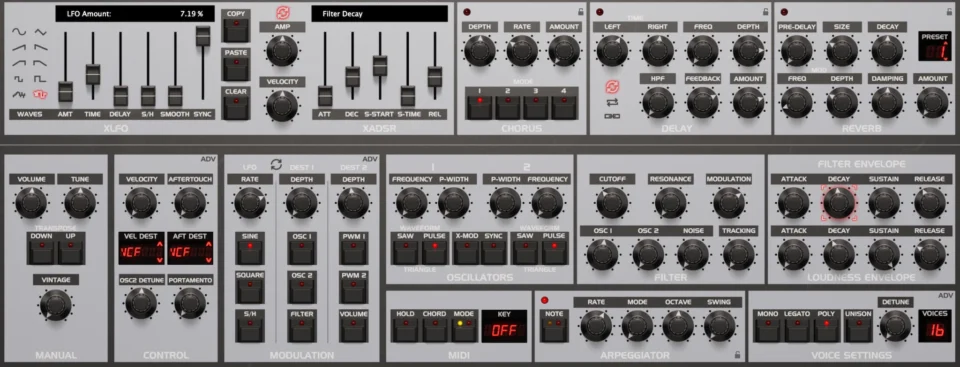
Modulating the LFOs
You can even use X-LFOs to modulate the front panel LFO settings themselves. Modulate the main LFO Rate knob for more complex, evolving modulation shapes, or, modulate the LFO Depth knobs to make the LFO effects increase and decrease automatically as you play.
Modulating the LFO rate can be used to create more complex tape-style pitch wobble. Set the main LFO to slowly modulate pitch, then assign a fast X-LFO to the LFO Rate control. This transforms the predictable up–down motion into something more textural, similar to the wow and flutter of analog tape. The interaction between the two LFOs creates shifting waveforms that vary depending on their rates, so it’s best to experiment and trust your ears.
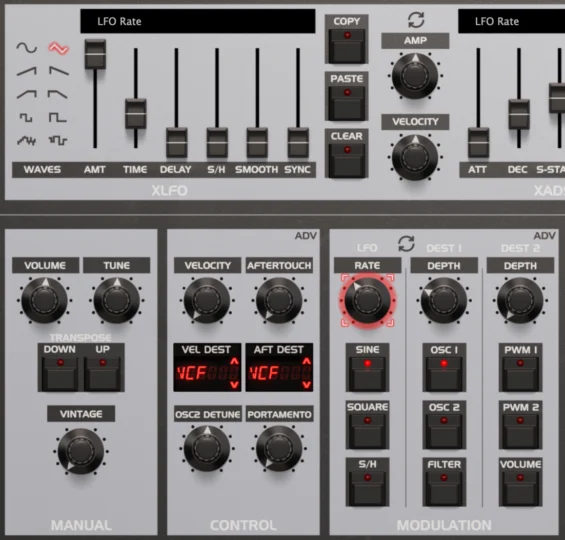
You can also modulate the LFO destinations such as pitch, filter, volume, or PWM to vary the modulation amount over time. This is often better handled using the adjacent X-ADSR envelopes, especially for slowly evolving pad sounds.
Effect Modulation
OB-X also lets you modulate its built-in chorus, delay and reverb effects with X-LFOs. Modulating effects can easily lead to strange, unstable sounds, but some useful destinations are delay, and reverb amount. Modulating these causes the ambience to subtly rise and fall, adding life to static pads.
You can also modulate delay feedback to create a build-and-release effect where the delay gradually moves toward self-oscillation before fading away. And finally, modulating the delay’s high-pass filter or the reverb’s damping behaves like adding a filter to the wet signal and can help create ambient textures that shift in tone over time.
